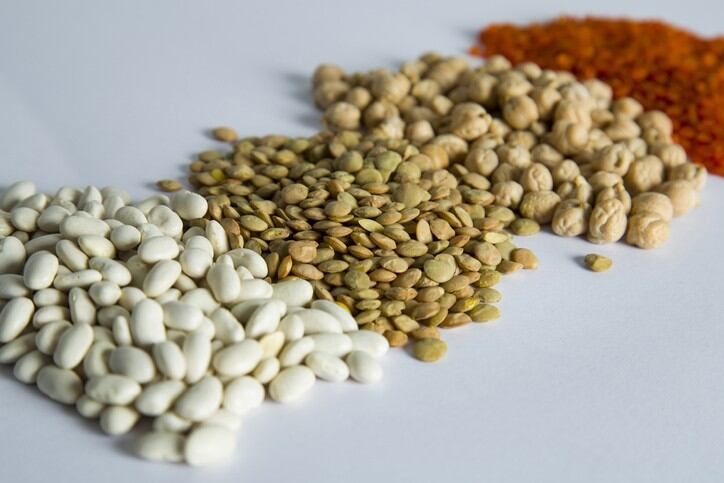The first generation of plant-based alternative proteins (before 2020) usually utilises protein blends of pea and soy.
However, the next-gen start-ups of today are open to using novel ingredients and formulations, says industry experts Isabelle Decitre and Vandana Dhaul of ID Capital.
ID Capital, an investment and advisory firm, is the organiser of the annual Future Food Asia Awards, which has acted as a springboard for agrifoodtech innovators.
Decitre said: “The failure rate is high for start-ups. That’s why we are focusing on novel ingredients. We are excited by players with B2C products.”
Novel ingredients, challenges and opportunities
Dhaul shared that the next-gen start-ups are faring better in producing and using novel ingredients, such as pulses, lentils, mung beans, seaweed and fungi.
The ingredients and formulations also improve the nutritional value of future food.
However, the extraction processes and competitive advantages required by such start-ups will need that catalyst from VCs who can provide strategic funding and exposure.
Decitre highlighted that the biggest hurdle when dealing with novel ingredients and formulations was the complex supply chain.
“The demand is there. But how do we scale up manufacturing to enter the mainstream market?
“To achieve a lower price point, we need a low-cost base. To get a low-cost base, we need the volume. To get volume, we need the capital expense. Equipment needed to manufacture plant-based meat replacements is expensive.
“Furthermore, consumers do not want a compromise on taste and price,” said Decitre.
Another opportunity in the agrifoodtech space is bettering agricultural practices using AI and novel technologies.
AI is considered an enabling technology emerging in the agrifoodtech space, which can assist with processing various novel ingredients and re-purposing waste further downstream.
They have also noticed emerging technology models that can help formulate products and optimise waste to create business value.
“There are opportunities to enter the field of energy re-generation, in which you convert or re-purpose the waste. We need to farm healthily and close the loop of sustainability,” explained Decitre.
The “novel” people and countries
Besides novel ingredients, Decitre mentioned the “novel births” of COVID-19 “babies”.
She referred to agrifoodtech start-ups that were registered or incorporated at the height of the pandemic.
Leading these start-ups were “novel” entrepreneurs from all walks of life – executives who left their day jobs to enter agtech, serial entrepreneurs from other industries and “second-attempters” whose first companies were shuttered.
“This trend (novel entrepreneurs) is simple – it means that agrifoodtech has become an attractive and desirable sector,” she said.
They usually came from four major countries: Singapore, Australia and the two mammoth markets of India and China.
According to Dhaul, Singapore was at an advantage due to its geographical location and market positioning as a foodtech hub; hence, it was a great “landing destination”.
As for China and India, Decitre added that they had a sufficiently huge market, and their start-ups are more ambitious. On India, Dhaul said the Asian sub-continent had many agtech and foodtech start-ups.
Additionally, Decitre identified the Middle East as an emerging player in the sector, with excited founders and new kinds of agtech innovations for novel ingredient and its processing.
“Asia is very different from the rest of the world. For example, in Asia itself, smallholder farmers from India are very different from smallholders in Cambodia. Hence, we want to understand the hurdles and trigger points.
“Today, we see younger Asian start-ups inspired by industries in the US and Europe. However, these start-ups provide the Asian edge and value addition,” said Decitre.
Dhaul then provided examples of such localisation efforts by these start-ups, like manufacturing plant-based “rendang” (coconut milk and spice-based meat stew native to the Malay Archipelago) and “satay” (grilled spiced meat skewers, also a ubiquitous offering in the region).
Overall, the safest path for investors would remain with precision fermentation due to its low cost of energy and easy access to biomass, advised Decitre.
A taste of FFA
According to ID Capital, APAC’s agriculture, food and technology businesses attracted over USD$7bn in funding during the first half of 2021.
Since its inception, FFAA has empowered over 60 APAC start-ups to present their cutting-edge innovations and distributed more than US$1m in awards.
This year, ten finalists out of 165 participants will compete for the grand prize of USD$100,000.
The previous edition in 2021 only had around 130 participants.
The firm will also stage a conference in June, where FoodNavigator-Asia is a media partner.
Decitre said: “FFAA is a good way to think about a business model, its processes and the beauty of sustainability that makes good business sense. Hence, we will be selecting the best of the best and selecting is a big piece of work this time.”


